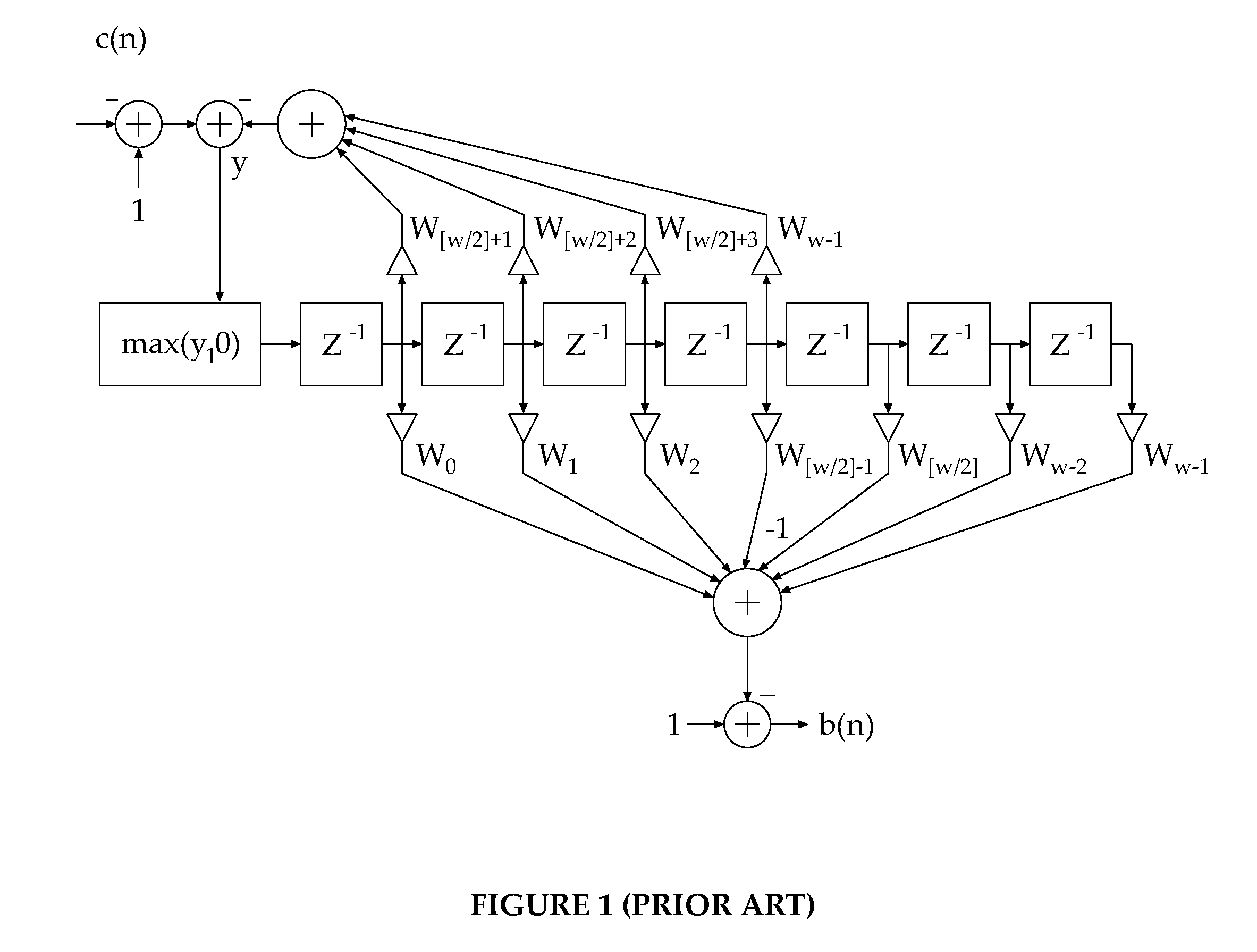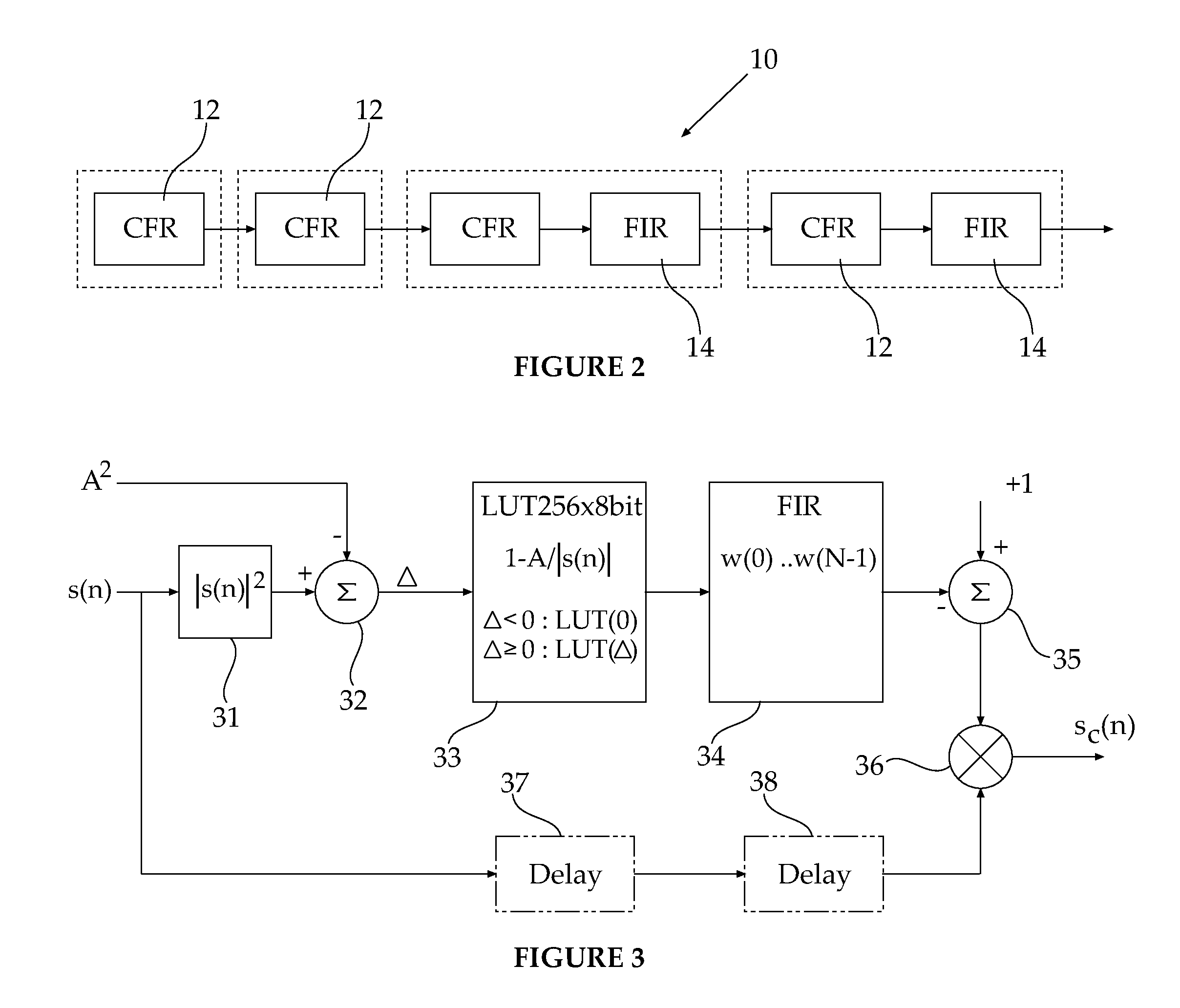Method and apparatus for crest factor reduction in telecommunications systems
a technology of crest factor and telecommunications system, applied in the field of telecommunications system, can solve the problems of high power consumption, significant increase of out-of-band emissions, and low power efficiency
- Summary
- Abstract
- Description
- Claims
- Application Information
AI Technical Summary
Benefits of technology
Problems solved by technology
Method used
Image
Examples
Embodiment Construction
[0018]The present invention relates to a method and system for wireless telecommunications providing improved performance of the CFR technique. This is accomplished by applying multi-stage, gradual peak-windowed clipping of the transmitted signal followed by its filtering for out-of-band spectrum shaping. The current invention answers the drawbacks of the prior art by chaining two or more original digital filter-only based, peak-windowing blocks (with no feedback). Using this multistage approach, the the signal can be clipped gradually, by clipping the higher peaks first, in the early stages along the signal flow, and then the lower peaks on the later ones. In this way, the peaks are gradually ‘diluted’ in time, each stage sees fewer events of close peaks and, thus, window overlapping is avoided to a high degree, thus eliminating the need for a protective feedback circuit. An additional advantage of the multistage approach is its programmable flexibility: different signal schemes an...
PUM
 Login to View More
Login to View More Abstract
Description
Claims
Application Information
 Login to View More
Login to View More - R&D
- Intellectual Property
- Life Sciences
- Materials
- Tech Scout
- Unparalleled Data Quality
- Higher Quality Content
- 60% Fewer Hallucinations
Browse by: Latest US Patents, China's latest patents, Technical Efficacy Thesaurus, Application Domain, Technology Topic, Popular Technical Reports.
© 2025 PatSnap. All rights reserved.Legal|Privacy policy|Modern Slavery Act Transparency Statement|Sitemap|About US| Contact US: help@patsnap.com



